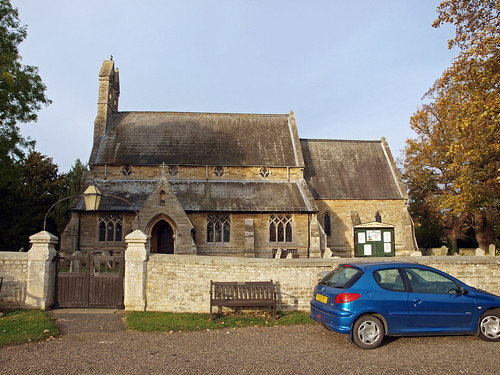ST GILES. 1862 by Edward Browning. Rock-faced, with a double bellcote. Dec in style, even the round clerestory windows with flowing tracery. The even, straight-headed three-light aisle windows look well from inside. Inside old materials were re-used. The E respond and two pier capitals N and S are medieval, S with a scalloped C12 capital and a moulded C13 capital, N with C13 octagonal capitals. - PLATE. Cup of 1709-10.
HOLME. One of the Fenland villages, it has lost a lake, which became good ploughland a hundred years ago, but it has still Holme Wood, all that is left of its old forest. It was in Denton Fen close by that an iron post was driven through 22 feet of peat to the underlying clay in 1852. When examined in 1932 it was found that the peat had shrunk ten feet, showing that the Fens are losing their rich mould and sinking a foot about every ten years.
There is a fragment of an ancient cross by the road, a 17th century cottage with beautiful Dutch gables, a group of thatched cottages, and a church only a lifetime old, though its altar table is three centuries old and its arcades go back to the Normans.
There is a very fine brass candelabra swung from the west arch of the chancel. The chancel and sanctuary have a fine tiled floor which has been uncovered in our time.
There is a fragment of an ancient cross by the road, a 17th century cottage with beautiful Dutch gables, a group of thatched cottages, and a church only a lifetime old, though its altar table is three centuries old and its arcades go back to the Normans.
There is a very fine brass candelabra swung from the west arch of the chancel. The chancel and sanctuary have a fine tiled floor which has been uncovered in our time.

No comments:
Post a Comment